The people that used to work in trade thirty to forty years ago will find it difficult to understand the behavior of contemporary buyers. It seems as if a good bulk of the buyers have lost their minds. While people used to buy the things they needed, wholly different reasons dominate now.
As city geographer Jim Pooler points out in his book Why We Shop, the average contemporary consumer shops to reward himself, to satisfy psychological needs, and to feel good. He doesn’t buy things because they’re cheap. On the contrary, he buys them because they’re expensive.
Children used to be so excited by new things that they would place a new toy under their pillow or wear new jeans at home because they couldn’t wait until they got to go outside. Now adults behave the same way. However, an adult has somewhat different “jeans” – instead an adult has cars, houses, and trips. Emotional purchases feel good – it’s like a shot of adrenaline mixed with a sense of joy and power.
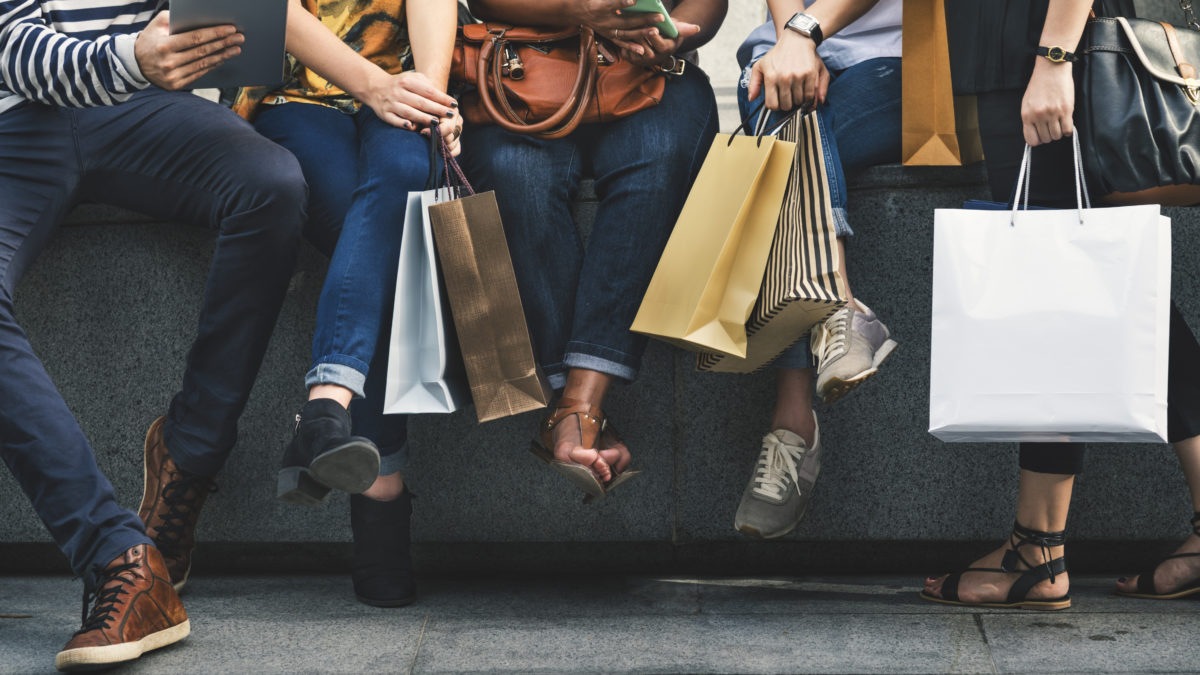
There’s no logical reason why someone should buy a $100,000 Porsche or Lamborghini – a $20,000 Ford or Toyota will get you from point A to point B just as well. And that is the primary purpose of a car. Buying a luxurious sports car satisfies wholly different needs. Most of the time, people don’t even acknowledge such needs. As Harvard professor Gerald Zaltman points out in his book How Customers Think, up to 95% of all purchase decisions are made subconsciously. The consciousness is mostly needed to explain one’s purchases to others (and yourself).
We are not wrong by claiming that the customer is an emotional and subconscious-driven being. This is why anthropologists, city geographers and merchants have carefully examined what makes a person buy something and how to wisely influence purchase decisions.
The following is a list of observations made over several decades. And if you’ve tried all of them and still claim that sales at your shop haven’t improved… well then try again!
How to wisely influence purchase decisions
Marketing isn’t the only thing that affects us. We’re also affected by other people. The next time you visit a Christmas market, think which street food vendor you choose – the one without a single buyer, or the one surrounded by a crowd? Or why do we sometimes buy the same food as the person before us?
Make Use of Our Desire to Imitate Others
Imitating the behavior of others is an innate quality of our subconscious that helps us bond with others and behaves “the right way”. Imitation may also be a conscious strategy. For example, we often ask a waiter which menu items are most popular or check out the most popular books at the bookshop.
Following the example of others is especially relevant when we don’t have a particular preference ourselves. Those “Popular products” and “People who bought A also bought B and C” prompts in online shops are there for a reason.
Social psychologist Alain Samson writes in Psychology Today that some companies have used this phenomenon to their advantage. For example, Apple makes it very clear who is part of their community. Allowing only a small selection of iPhone ring tones and only manufacturing white headphones is an intentional decision.
How often do we see lists of popular foods, wines or trolls in any given shop? Why aren’t these more common? Granted, such “most popular” lists will not work in every setting, e.g. in a women’s clothing shop, where it’s important to be unique, or when it comes to other products related to our self-image (anything from lipsticks to cars).
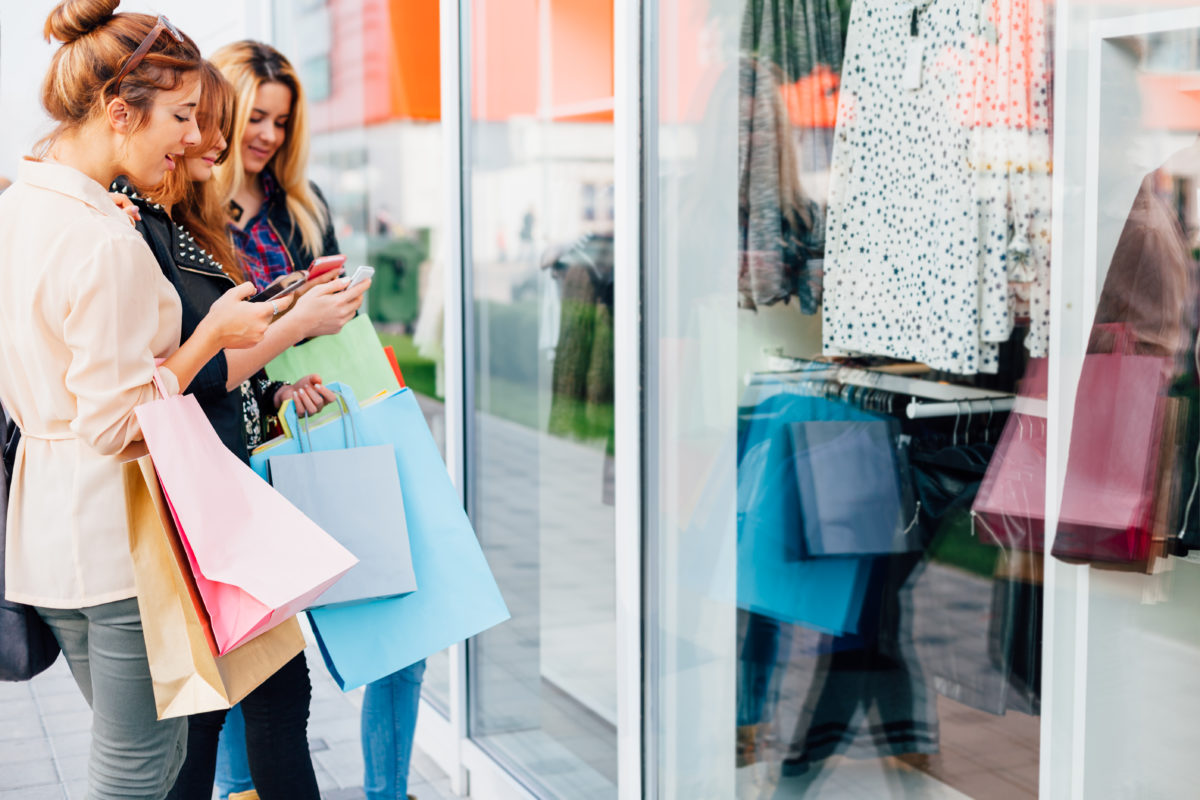
Promote Impulse Purchases and Self-rewarding
Impulsivity and the tendency to make impulse purchases vary from person to person. However, it would be incorrect to claim that there are people who remain completely unaffected by discount offers and ads. A clothing industry survey conducted in Estonia revealed that discounts provide huge motivation for women to go to a particular shop and that around 50% of women make the purchase decision spontaneously.
One survey posits payday as a major motivator – the knowledge that “I have a lot of money right now” motivates 60% of people to go shopping. 51% make impulse purchases based on the “I’m happy” feeling, while 35% do so based on the “I’m hungry” feeling. The list of reasons to buy goes on – Christmas, birthdays, the start of a holiday.
Shopping, like having sex and using recreational drugs, floods the brain with dopamine, i.e. the pleasure molecule. Psychologists have even adopted a special notion for this thrill-seeking, emotion and fantasy-based behavior – hedonic consumption.
If people want to reward themselves, allow them to do so at your shop! It’s easy to display wine and chocolate like presents at the grocery store, but maybe similar goods should also be on display at a clothing or bike shop?
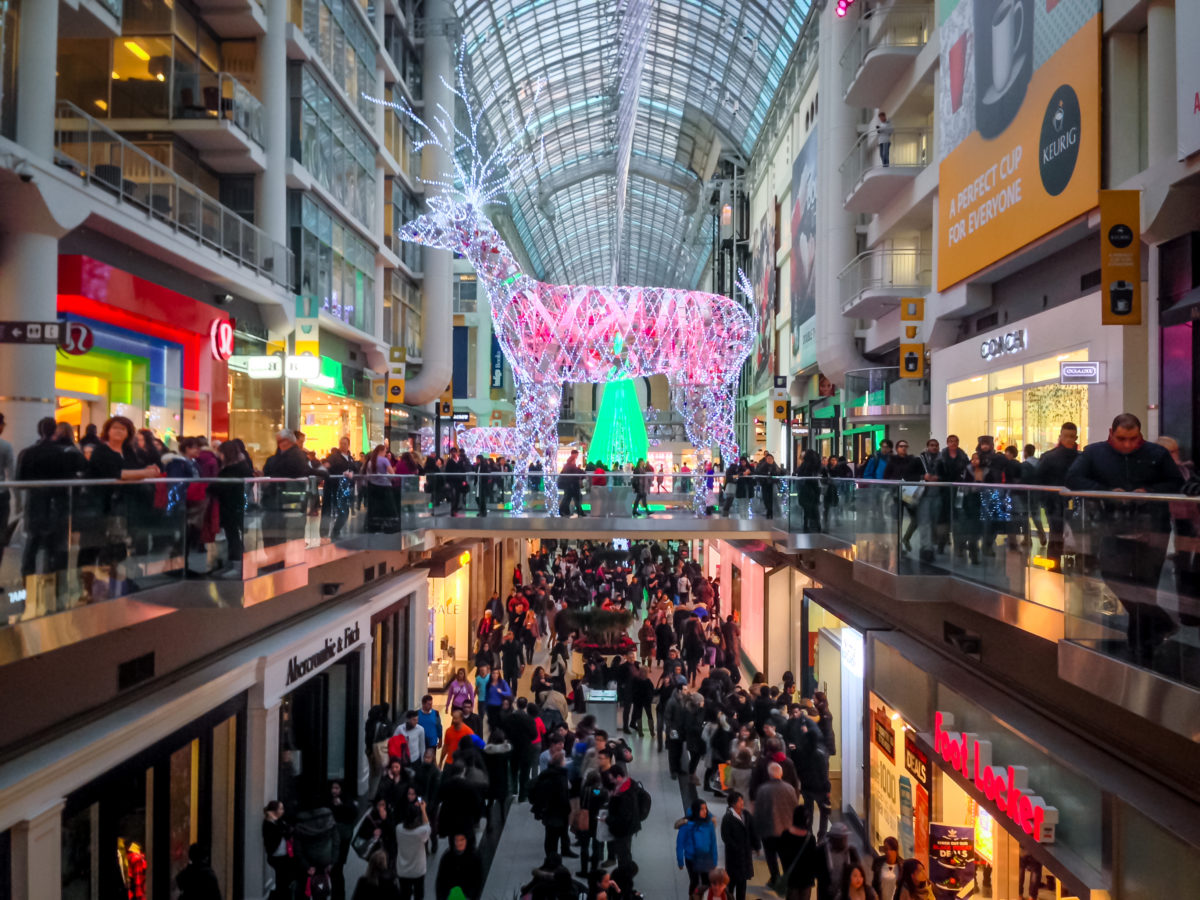
Need for Closure
Black Friday has spread across the world like wildfire. Once you’ve gobbled up the Thanksgiving turkey, it’s time to go shopping!
Black Friday presents a clear imperative – buy a lot and fast – because the stores only run the offers one day (24 hours to be more precise) a year. You snooze, you lose. A new day comes and the fairy-tale is over. Granted, Black Friday is followed by Cyber Monday, i.e. the Monday following Thanksgiving, a day of mass online purchases.
Psychologists believe that one explanation of why this type of mass buying is spreading is people’s need for closure. The notion was adopted in 1996 by scientists Kruglanski and Webster and it denotes psychological behavior where an individual wants to conclude the decision-making process and to act. The motivation to act varies from person to person but most possess it. A good way to satisfy that need is to pick one day to buy Christmas presents – you make the decision and act fast.
So if your store hasn’t participated in this campaign yet, what are you waiting for? Texas University professor Art Markman recommends that people do their homework before they go shopping (research the qualities, actual price range, etc. of a product), but whether you do so or not is up to you.
People don’t rush to Black Friday sales out of desperation – they actually feel they need to. This urgency benefits the merchant. A buyer who is in a rush and annoyed has less time to consider and less control over his or her willpower and is more likely to make impulse purchases. An experiment conducted by Psychology Today supports this. During the experiment, participants were asked to choose between a salad and a chocolate cake; some were given an additional task of remembering a seven-digit number. Turned out that those that were preoccupied with memorizing the number, were much more likely to choose in favor of the cake. At the end of a long workday, we’re also going to be tired and looking to buy something quickly.
Make the Price Work in Your Favour
We all believe that we compare prices rationally and objectively. The reality is far from it. The price is always relative and what we consider cheap or expensive can be influenced.
Behavioral economics and psychology professor Dan Ariely has demonstrated how we become irrational when dealing with money in a number of experiments. In one of his experiments, the subjects were given the choice of buying a Ferrero Rocher chocolate for 26 cents or a Hershey’s Kiss for 1 cent. 40% of the participants chose Ferrero and another 40% chose the Kiss.
When the prices were reduced by 1 cent, 90% of the people chose the Kiss, although the price difference between the two treats was still 25 cents. It’s just that the Hershey’s Kiss was free, and something being “free of charge” is a force to be reckoned with.
An equally powerful force is gaining something tangible. An experiment conducted by Minnesota University scientist Akshay Rao revealed that people bought 73% more hand cream when the package included a bonus cream tube compared to when the price was lowered by an equivalent amount.
People just didn’t understand that increasing the amount of the product by 50% is equal to reducing the price of the product by 33%. The blindness to numbers continued to prevail when people made purchase decisions that clearly did them a disservice, i.e. when the price was again lowered by 33% but the bonus tube no longer contained 50% more product but only 33% more. The majority still chose the bonus package and were satisfied with their decision.
People also believed that they benefitted more when a product was first discounted by 20% and then a further 25%, instead of a single equivalent 40% discount.
In Entrepreneur, Marketing professor, and strategy manager at Canadian agency Jelly Marketing, Darian Kovacs lists four methods that implement psychology to make people buy and walk away believing they’ve struck a great deal.
A
decoy price
allows you to confuse us. For example, if a small beer at a bar costs $4 and large costs $9, the customer will find it easy to decide in favor of the small beer. However, if you include a third price – small beer $4, medium beer $8 and large beer $9 – it’ll be easy to decide in favor of the large beer. The large is, after all, only a dollar more expensive than the medium. National Geographic Channel reached a similar conclusion in their experiment featuring popcorn packages. In psychology, this phenomenon that causes people to believe distorted and illogical information is called cognitive bias.
Another classic option is
bundling.
As neuromarketing consultant and author Roger Dooley explains in his book Brainfluence, seeing a steep price activates the part of the brain responsible for processing pain. Bundling is an easy way to ease that pain because it’s difficult to grasp the price of an individual item from a bundle.
This method is common among book and, increasingly frequently, car sellers. The latter no longer list all the extras (e.g. leather seats, a better audio system, etc.) individually in the price list but rather sell a combination as different package deals. Bundling is an age-old method that’s also ideal for popularising new products and much more. However, it isn’t the best idea to bundle a cheap and expensive item. Experiments have shown that the cheap item will deduct the value of the purchase for the buyer, making him/her unwilling to pay even the price of the more expensive product for the entire bundle.
The third method is
anchoring
and is based on how a person creates a reference price in their head every time they consider buying a product. This reference price will be used to determine whether your product’s price is acceptable or expensive. The beauty lies in the fact that the reference price can be manipulated. This phenomenon is called anchoring bias.
When a person has to make a (purchase) decision, their subconscious will begin seeking additional information. The first bit of information they encounter will be “anchored” in the mind and have a significant effect on the decision. The most common way of achieving this is a play on prices. The former higher price has been crossed out on the price tag but is clearly visible. The new price now seems significantly cheaper compared to if that were the only price on the tag.
Anchoring doesn’t only concern prices. For example, if you’re looking to buy a used car and someone strategically directs your attention to the mileage, your subconscious will become anchored to it and you may easily fail to take note of the service history, corrosion, the state of the wheel and breaks, etc.
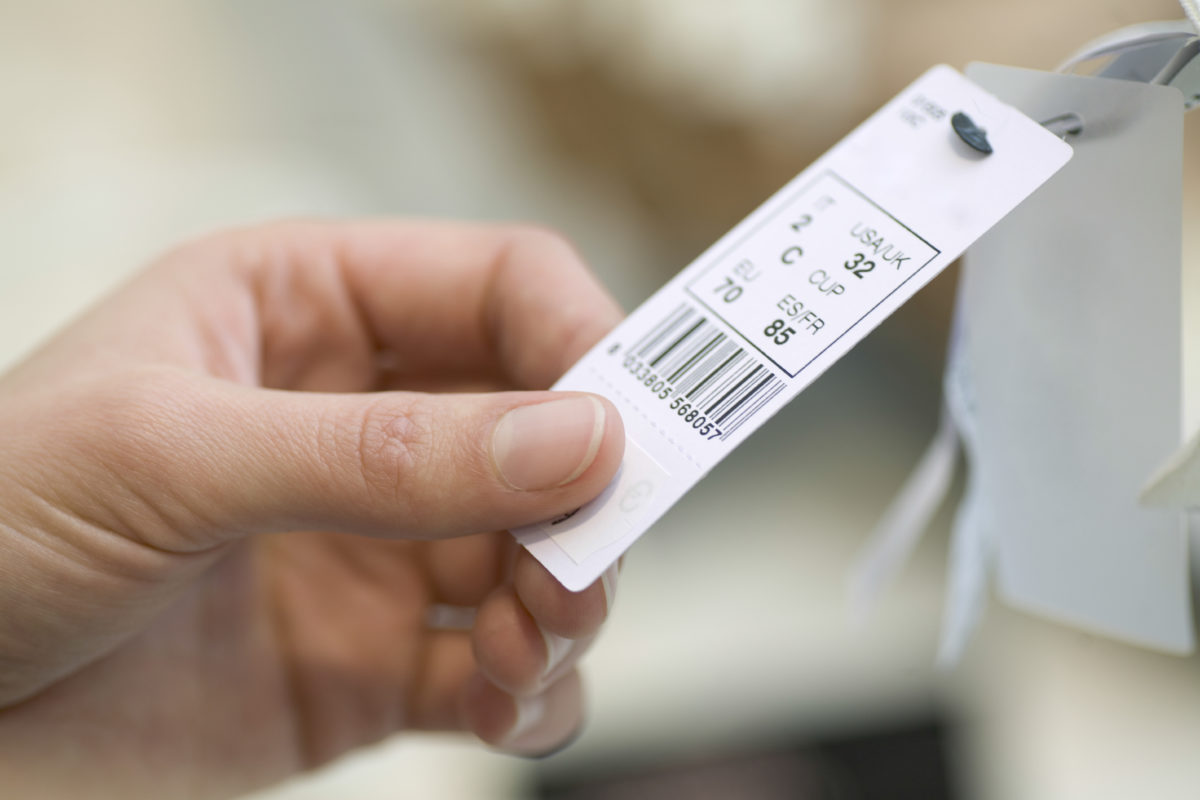
The
foot-in-the-door
technique concentrates on getting a small “yes” from the customer to make getting the big “yes” that much easier. A classic study on this was organized in 1966 by behavioral scientists who asked a group of people to place a small sticker promoting safe driving on their car. The other group didn’t have to do anything. A couple of weeks later, all of the participants were asked to install a large poster on their lawn to promote safe driving. The people who had been given the sticker tended to agree to do so while the other group was not that fond of the idea. One of the more widespread foot-in-the-door methods is being able to download a free eBook in exchange for your email address. Only then will the offers for other products start popping up in your mailbox.
Two other pricing methods have stood the test of time. KPCB partner Bing Gordon hails “Rethink fairness!” and suggests hacking a $1,000 sum into pieces. Paying 84 euros in twelve installments doesn’t sound all that bad. The pain is gone! It doesn’t even matter that the customer actually ends up paying a little more than a thousand dollars over the twelve months.
And last but not least, deduct the even number by one cent! Not $10 but $9.99. The charm pricing method still works. Even though we all know we are being duped (the price is only one cent less than ten dollars), the brain likes to think it’s nine instead of ten.
Scientists Thomas and Morwitz from Cornell University have researched this method and point out that it doesn’t work always and in every context. Among else, it’s important that the number on the left also decreases. So 5.60 vs. 5.59 won’t work but 5.00 vs. 4.99 will.
However, some research indicates that when it comes to certain products, especially the more luxurious kind (e.g. champagne), a whole price might work best – so not 49.99 but a nice 50 even.
Literature is abundant with price tactics that are based on psychology. However, the tactics that work in a jewelry shop will most likely not work in a small grocery shop. But the fact that it’s so easy to affect people’s purchases with prices only means one thing – experiment!
Don’t Forget the Fear of Loss
Which minced meat would you prefer, the one that has 90% lean meat or the one with 10% fat? How you communicate this message about minced meat shouldn’t make any difference, but surprisingly it does.
To understand this, imagine, for a moment, that you find one hundred dollars on the street. Who wouldn’t be happy to find one hundred dollars? The joy at finding one hundred dollars is far less than the pain of losing one hundred dollars. The feelings should be equal, but they’re not.
The pain, or more particularly, fear of loss has been scientifically proven and was first defined by economic scientists Tversky and Kahneman, who would perfect the theory. People’s behavior is shaped by this fear. We are less likely to take risks when we know we can win – even if it is a small victory.
The fear of loss, however, is so powerful that it affects marketing messages where you would least expect it. Yes, also when buying meat. Scientists Levin and Gaeth set out to determine whether people prefer minced meat that contains 90% lean meat or that has 10% fat. They discovered that by highlighting the phrase “lean meat” when making the sale, people tended to believe that the meat was higher quality than when using the word “fat”.
So the skill to choose the correct words is incredibly important in getting people to make the initial purchase.
However, the decision to make a repeated purchase is based on personal experience. The minced meat experiment also confirmed this – the likelihood of a repeat purchase was the same, regardless of which marketing message the person had heard.
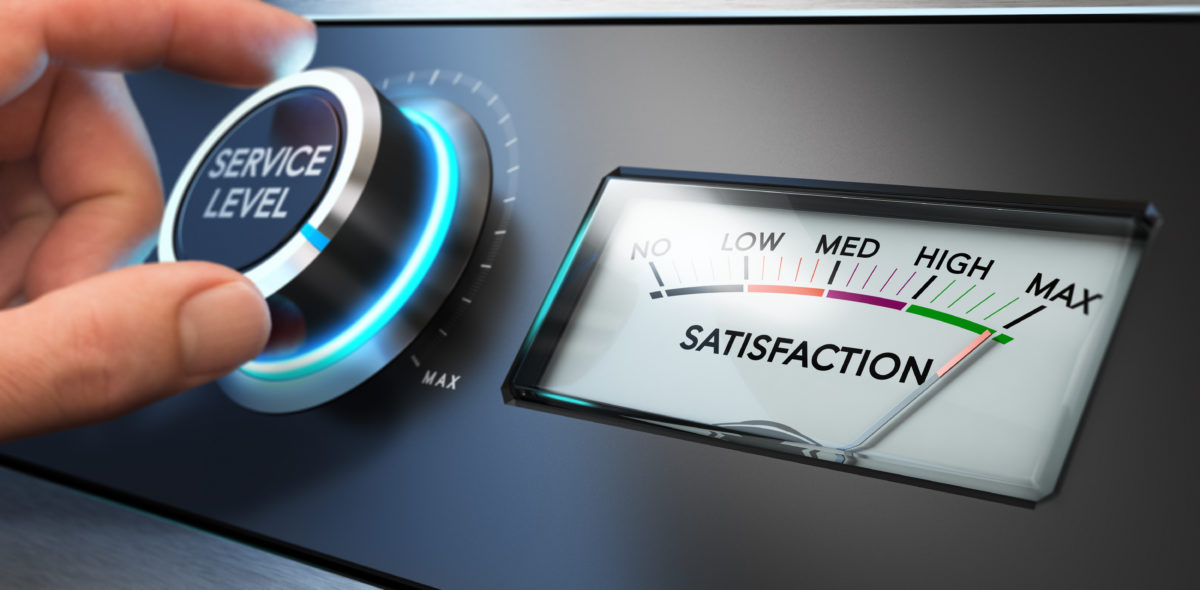
Create an Environment the Buyer Doesn’t Want to Leave
It’s hard to read a book if you don’t know the alphabet. The same goes for creating the layout of a store. You can always come up with something special that gets people to come to your shop. But until you come up with that great idea, it makes sense to follow a couple tried and true guidelines.
How to Design the Layout of a Store?
The first order of business is the display window! Since the contemporary customer has less time than ever before, the display window has to immediately attract their attention. As highlighted by Shopper Marketing authors Ståhlberg and Maila, the display window must immediately answer two questions:
- What is the store’s primary line of business?
- Do the items sold at the shop suit the customer’s individual style?
It’s great if the display window tells a story, is funny or reminiscent of a period in history. So it’s best to not overload a display window, less is more. The first meters near the shop’s entrance are the acclimation zone. Don’t stuff items here because the customer is either coming from broad daylight or dim lighting. This is where you greet the customer, give her a shopping cart and maybe a useful coupon.
Think, when was the last time you entered a shop and browsed it in a counter-clockwise circle? If you have, you’re one of the few. Most people keep walking straight or turn right when they enter a shop. Thus, this is where you should put the items that are new in stock.
That’s just how it is. We need to lure the customer that only came to get milk, sausage, and bread all the way to the back of the shop. The copy paper is always at the back of the office supply shop. Beer in an alcohol shop. That little extra walking will only benefit the customer’s health.
Some goods are so heavily advertised that they are purchased automatically – for examples Coca-Cola or Kellogg’s products. Such items should be displayed at eye level because people are going to buy them anyway. All you have to do is make sure they’ll easily find the product in your shop.
Creating a Cosy Atmosphere
This is just the beginning, the bare minimum you can do. Now the real work begins! You only need to do one thing – make the customer feel comfortable to get them to stay in your shop for as long as possible. This depends on how good they feel in your shop.
Marketing consultant J’Amy Owens told Inc. magazine that once the customer is in the shop, you have to dangle a “visual carrot” in front of them. Something exciting that is displayed differently from the other goods and attracts interest. Ideally, these carrots could be placed one after another in a long aisle. Once the customer is in the belly of the shop, they reach the hot spot where items with a higher price margin can be found.
Don’t Be Afraid to Flirt with the Customer
If you merely place the goods on a shelf and even if the buyer does find them, trust us, they’re not going to be happy about it. The buyer wants to be teased and seduced, to form a relationship with the goods. A robotic lawn mower is great but the effect is much greater when it’s doing its thing on a small patch of lawn in the store. A ball is great but if a little boy sees Michael Jordan skilfully land the ball in the hoop on a screen, the impact will be that much greater. Even better, let the boy try it out himself.
Many shops are already successfully implementing this method. Some sports shops even let you try the wetsuit on and test it out in a pool filled with ice cubes. Or you might be able to spend the night at the shop to test how great the tent, mattress and sleeping bag are.
Making bread in front of the customers’ eyes with all the smells wafting around is far better than any marketing. But smells aren’t only relevant at the grocery store. For example, the swimwear department at Bloomingdale’s smells like the tropics, the baby supplies department like baby powder and the women’s lingerie department like sweet violet.
An Anthropologist’s Recommendations
We recommend reading Paco Underhill’s Why We Buy
. Underhill is an anthropologist who has spent the last twenty-five years researching trade. He and his team surveil buyers like PIs – how fast they walk, where they slow down, where they stop, what they pick up from the shelves, how long they spend looking at it, do they put it back on the shelf or in their cart? In addition to that, they also survey the buyers.There are numerous ways to make buyers feel good and often these methods cost nothing. For example, every women’s clothing store should have a comfy corner for men where they can sit down and read a good magazine. It would also be lovely to offer coffee or a glass of wine to ladies waiting on their friend while she’s in the changing room.
Secondly, most people have no idea how much they intend to spend when they enter a store. You know how it is, you go to the shop to buy some cheese and end up walking out with… If the shopping carts and baskets are small, the store should have stands where customers can pick up additional baskets. Without those, a full basket marks the end of shopping.
The aisles must be wide enough to allow two carts to pass each other comfortably. If a customer has to back out of an aisle to let someone pass, they might not walk back down that aisle again.
When it comes to signs and labels, it’s best to avoid a situation that you might encounter on some streets – so many signs that if you’d try taking note of all of them, you’d likely crash because you wouldn’t have time to notice the other people on the road. The golden rule is one big and clear sign at a time. If the customers are moving fast, then a large sign with a few words is best. Don’t believe designers blindly – check which color and font size are best for your store.
Mirrors make a store seem more spacious and formal. Just don’t overdo it, lest you want your store to resemble a house of mirrors.
However, all of the above will be useless if your store isn’t manned by lovely and helpful staff. Bad service overshadows everything else – a good location, great prices, and an excellent selection.
Underhill also lists gender and age-specific behavior.
Men
browse aisles quicker than women. If possible, they will avoid talking to and asking advice from the staff – similarly to how they hate being instructed when driving. Men prefer informational signs and screens. However, nobody is going to watch a thirty-minute cooking show at the store.You should pay attention to men regardless of the store, incl. at a makeup and health store. The items intended for men should be in a separate area that is easy to find.
Women
want to see how the goods would look in their home. This is something the Swedish giant IKEA picked up on years ago – you’re not merely at the store but in a large kitchen, living room, bedroom, etc.Since women are an increasingly important target group in every field of commerce – even at hardware shops, it would make sense to take note of the observations made by Hertfordshire University’s behavioral scientist, professor Karin Pine.
- Women buy to regulate feelings and emotions;
- When women buy something they’re ashamed of, they will load the basket with other items to hide that one thing;
- The way women shop depends on how full their bladder is. Make sure your shop has plenty of toilets and women will spend more time there.
Children
are the most fashion and brand conscious group of customers because they’ve seen nearly all the TV ads. Make sure that the Kellogg’s products are at their eye level and that there’s plenty to keep children entertained during longer shopping trips. An upset child can even ruin a long-ago made decision to buy a car.
The elderly,
however, will get angry when the shop is dark and the writing on the packages is too tiny.
Music Even Affects the Act of Buying Wine
Research confirms that people spend more time in a shop and buy more if the shop has nice music. Just like great sex, music creates endorphins – though in a smaller quantity, but enough to feel good.
The general consensus is that jazz or classical music are best suited for a shop that sells somewhat more expensive goods. Texas Tech University’s scientists Charles S. Aren and David Kim, however, discovered that classical music might also be perfect in a wine shop and that shoppers spent more time at wine shops that had classical music. Although people bought the same amount of wine from shops that played TOP40 pop songs, classical music made more people buy wine.
According to the representatives of the National Association of Music Merchants, good music presents another advantage by having a positive effect on the staff’s mood, relieving stress and depression.
It’s important to keep in mind the following:
1 Make sure the music stays in the background
Music is great for creating atmosphere but it shouldn’t start to dominate. Background music is enough to avoid a sense of dreary silence.
2 Calm music is better
The more sudden and heavy the music, the more stress it creates in the buyers. Calm music calms the customers and extends the time they stay in the store, thus increasing sales.
3 The effect of color and light
Colour affects what we expect from a product. Research on gum issued by Food Quality and Preference indicated that we sense calmer colors as more elegant. Warm colors have a more sensual and rebellious effect, while shades of red are likely to make us make more impulse purchases.
It doesn’t matter whether you sell pizza or a tool case – there is a specific enticing light for every product. At a jewelry shop, it’s imperative that you find the right one!
Good Packaging Makes Us Happy
Shopper Marketing tells us that products like Coca-Cola, Tide and Absolut Vodka are proof that the fifth P – packaging – is just as important as the four other components (product, price, place, and promotion). It’s worth noting that packaging is the cheapest of the five.
Research by Marco Hubert et al. published in Psychology & Marketing that looked at fMRIs of the brain revealed that attractive packages activate the parts of the brain associated with positive emotions and rewarding the self. Ugly packages, however, activated the parts of the brain associated with negative emotions. This indicates a clear correlation between beautiful packages and the decision to buy.

Research on water and vodka packaging also revealed that buyers prefer round (incl. cylindrical) packaging to boxy ones. Buyers also like it when an image or photo is located right of the text (it simplifies reading since we read from left to right). It’s also great to show what’s inside the package on an illustration (e.g. an image of a drop of water was well-received).
The packaging affects the way the goods inside it are perceived. A survey published in the international research journal Appetite indicates that a simpler and more natural soup packaging meant that the soup was perceived as more healthy. Weight also factors in. When an item was placed in two packages of different weight, people tended to choose the heavier one. The same applied to wine – the wine with the seemingly heavier package (incl. the cork) was perceived as having better quality.
Also, don’t forget to use small packaging for tempting goods (e.g. chips, halva, and other confections, etc.). Many can say no to a big package but will give in to the temptation when the item is in a small package.
Technical University of Lisbon scientist Rita Coelho do Vale researched the snacking habits of people who enjoy TV.
She discovered that smaller packages presented a greater temptation. The researchers summarised the findings: “Since smaller packages are viewed as an innocent pleasure, they are more likely to become dirty little sins.” Other research has also indicated that chronic dieters eating from small packages tend to consume more calories than those that don’t care for diets.
So if people don’t buy temptations in small packages from your store, they will from the next.
You are not alone in trying to figure out how to increase sales at your shop – hundreds of psychologists and behavioral scientists around the globe are thinking along with you. Keep your eyes and ears peeled and you won’t regret it!